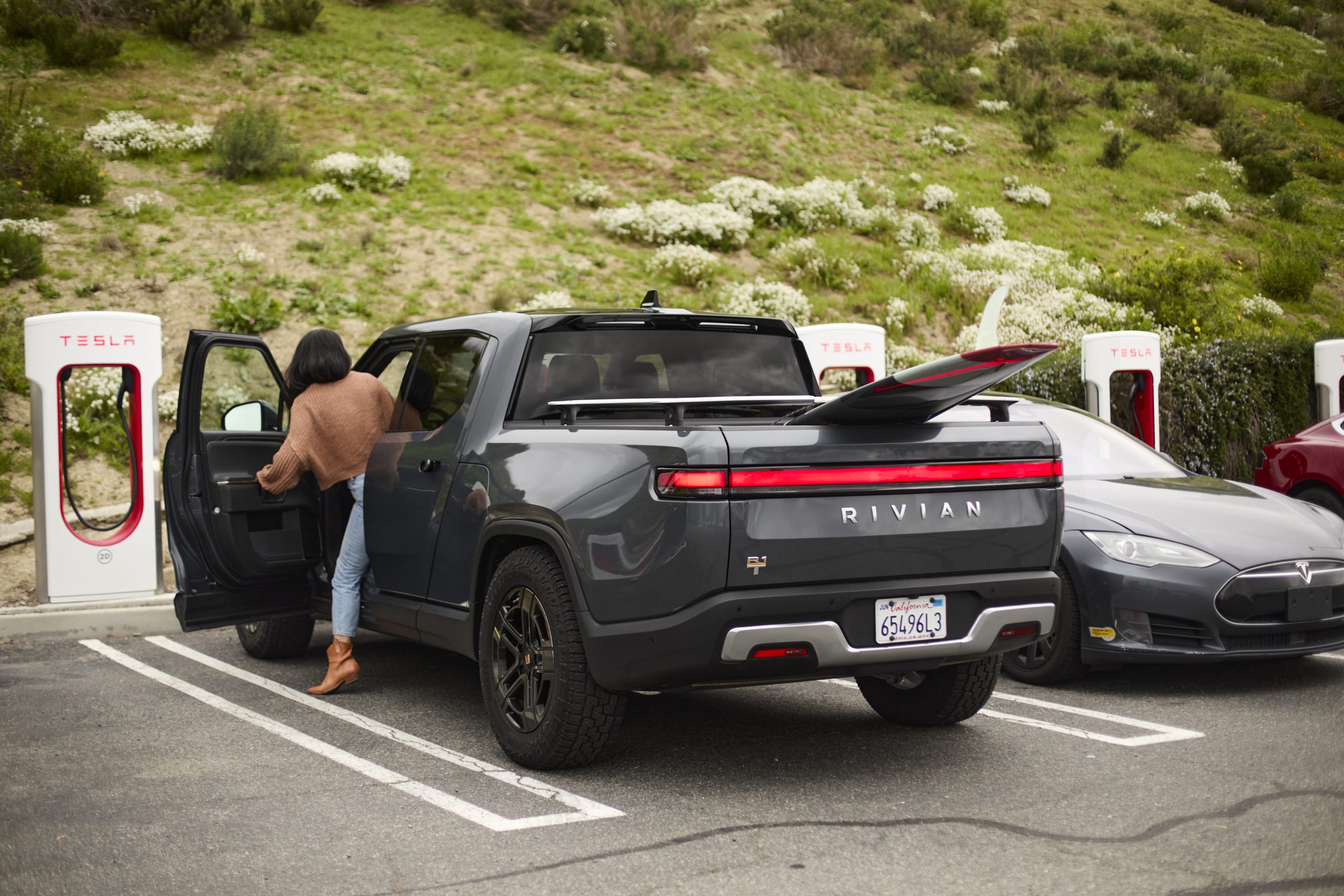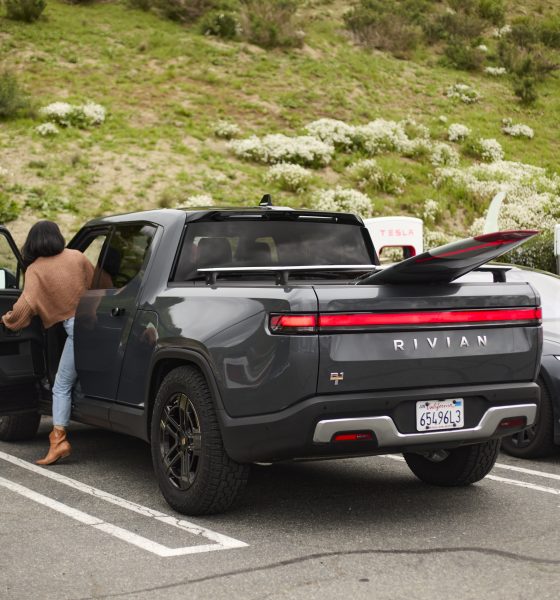Tesla has recently detailed some of the improvements it’s working on for the Supercharger network, especially as it has slowly been expanding access to the stations to electric vehicles (EVs) from other brands.
As Tesla has begun giving new non-Tesla EV brands access to the Supercharger network this year, many have also noticed how charging port placement on other vehicles can make it harder for short cables to reach—often requiring drivers to block other charging stalls to plug in.
However, in a post on X from the Tesla Charging account on Friday, the company has highlighted four things it’s aiming to improve for all EV owners, including a boost to the number of long charging cables at its Supercharger stations. In particular, Tesla says that within the next 18 months, it will have more long V4 Supercharger cables at stations than short ones, as it aims to start upgrading shorter cables to meet the needs of other EV brands.
In the post, Tesla outlines the following four goals it’s working on as it dives into improving the charging network:
- Making stall availability more accurate than ever
- Increasing the number of long Supercharging cables
- Modifying Supercharger stations to avoid blocking stalls
- Encouraging manufacturers to follow suit with charge port locations
Tesla makes it easier to find towing-compatible Superchargers
Tesla says that the latest software update makes stall availability estimates even more accurate, as the vehicle is now able to detect when EVs with a non-Tesla charge port location are plugged into a short-cable stall. This algorithm is set to continue improving over time, making it easier for drivers to get an accurate picture of how many stalls are available, as well as how many are blocked out by those needing to park unconventionally to reach.
The updated stall availability algorithm is a big improvement, with nearby refresh rates now every ~15 seconds. We know car types plugging in and mapped out Supercharger site layouts, to know which stall is not available at short cable sites. Your Tesla's touchscreen now shows… https://t.co/5PF7wruNhQ— Max de Zegher (@MdeZegher) November 22, 2024
In addition, Tesla says it has already modified over 1,500 Supercharger stations to make it so that EV drivers never have to utilize more than two charging spaces to charge, and it plans to continue working on updating sites going forward. Lastly, the company has gone directly to other EV manufacturers to encourage them to move charging ports to the rear left of their vehicles or to the front right, in order to maximize compatibility with the company’s Superchargers.
As one example in March, Tesla’s Lead Cybertruck Engineer Wes Morrill encouraged Rivian CEO RJ Scaringe to re-consider the location of the charging port for the upcoming R2 and R3 platforms, after prototype designs for the EVs were first unveiled and showed the port on the rear right instead. If Rivian wants to optimize for street parking as it appears to be doing, Morrill says that the company should move the port to the front right instead.
The company’s deployment of longer V4 Supercharging cables also follows the company’s debut of V4 charging cabinets earlier this month, effectively debuting faster charging speeds of up to 500kW. Companies like Ford, Rivian, General Motors (GM), and Nissan have already started gaining access to Tesla’s Supercharger network after adopting the company’s NACS last year, and Tesla will continue to widen access to the charging stations in the coming months and years.
What are your thoughts? Let me know at zach@teslarati.com, find me on X at @zacharyvisconti, or send us tips at tips@teslarati.com.
Ford to replace Tesla NACS adapters, warning of damaged charging ports

Elon Musk
Elon Musk’s xAI closes upsized $20B Series E funding round
xAI announced the investment round in a post on its official website.

xAI has closed an upsized $20 billion Series E funding round, exceeding the initial $15 billion target to fuel rapid infrastructure scaling and AI product development.
xAI announced the investment round in a post on its official website.
A $20 billion Series E round
As noted by the artificial intelligence startup in its post, the Series E funding round attracted a diverse group of investors, including Valor Equity Partners, Stepstone Group, Fidelity Management & Research Company, Qatar Investment Authority, MGX, and Baron Capital Group, among others.
Strategic partners NVIDIA and Cisco Investments also continued support for building the world’s largest GPU clusters.
As xAI stated, “This financing will accelerate our world-leading infrastructure buildout, enable the rapid development and deployment of transformative AI products reaching billions of users, and fuel groundbreaking research advancing xAI’s core mission: Understanding the Universe.”
xAI’s core mission
Th Series E funding builds on xAI’s previous rounds, powering Grok advancements and massive compute expansions like the Memphis supercluster. The upsized demand reflects growing recognition of xAI’s potential in frontier AI.
xAI also highlighted several of its breakthroughs in 2025, from the buildout of Colossus I and II, which ended with over 1 million H100 GPU equivalents, and the rollout of the Grok 4 Series, Grok Voice, and Grok Imagine, among others. The company also confirmed that work is already underway to train the flagship large language model’s next iteration, Grok 5.
“Looking ahead, Grok 5 is currently in training, and we are focused on launching innovative new consumer and enterprise products that harness the power of Grok, Colossus, and 𝕏 to transform how we live, work, and play,” xAI wrote.
Investor's Corner
Tesla gets price target bump, citing growing lead in self-driving

Tesla (NASDAQ: TSLA) stock received a price target update from Pierre Ferragu of Wall Street firm New Street Research, citing the company’s growing lead in self-driving and autonomy.
On Tuesday, Ferragu bumped his price target from $520 to $600, stating that the consensus from the Consumer Electronics Show in Las Vegas was that Tesla’s lead in autonomy has been sustained, is growing, and sits at a multiple-year lead over its competitors.
CES 2026 validates Tesla’s FSD strategy, but there’s a big lag for rivals: analyst
“The signal from Vegas is loud and clear,” the analyst writes. “The industry isn’t catching up to Tesla; it is actively validating Tesla’s strategy…just with a 12-year lag.”
The note shows that the company’s prowess in vehicle autonomy is being solidified by lagging competitors that claim to have the best method. The only problem is that Tesla’s Vision-based approach, which it adopted back in 2022 with the Model 3 and Model Y initially, has been proven to be more effective than competitors’ approach, which utilizes other technology, such as LiDAR and sensors.
Currently, Tesla shares are sitting at around $433, as the company’s stock price closed at $432.96 on Tuesday afternoon.
Ferragu’s consensus on Tesla shares echoes that of other Wall Street analysts who are bullish on the company’s stock and position within the AI, autonomy, and robotics sector.
Dan Ives of Wedbush wrote in a note in mid-December that he anticipates Tesla having a massive 2026, and could reach a $3 trillion valuation this year, especially with the “AI chapter” taking hold of the narrative at the company.
Ives also said that the big step in the right direction for Tesla will be initiating production of the Cybercab, as well as expanding on the Robotaxi program through the next 12 months:
“…as full-scale volume production begins with the autonomous and robotics roadmap…The company has started to test the all-important Cybercab in Austin over the past few weeks, which is an incremental step towards launching in 2026 with important volume production of Cybercabs starting in April/May, which remains the golden goose in unlocking TSLA’s AI valuation.”
Tesla analyst breaks down delivery report: ‘A step in the right direction’
Tesla has transitioned from an automaker to a full-fledged AI company, and its Robotaxi and Cybercab programs, fueled by the Full Self-Driving suite, are leading the charge moving forward. In 2026, there are major goals the company has outlined. The first is removing Safety Drivers from vehicles in Austin, Texas, one of the areas where it operates a ride-hailing service within the U.S.
Ultimately, Tesla will aim to launch a Level 5 autonomy suite to the public in the coming years.
Elon Musk
Elon Musk’s Biggest Revelations on AI, Robots, and the Future of Work from the Moonshots Podcast

Elon Musk’s appearance on the Moonshots with Peter Diamandis podcast was packed with bold predictions, candid admissions, and surprising tech insights. The nearly three-hour conversation covered everything from artificial intelligence to humanoid robots, geopolitics, and the future of work. Here are the top 10 most intriguing takeaways:
-
Aggressive AGI Timeline Predictions
Musk offered a detailed view on when artificial general intelligence (AGI) could emerge, suggesting it may arrive sooner than many expect, emphasizing both transformative potential and risks.
-
U.S. vs. China in the AI Race
He discussed the strategic competition between the United States and China over AI development, noting that geopolitical dynamics will shape how and who leads in the next decades.
-
Future of Job Markets
Musk touched on how AI and automation could reshape employment, predicting massive boosts in productivity alongside potential disruptions in traditional work structures.
-
Clean Energy Transition
A recurring theme was the role of clean energy in future economies, with Musk reiterating the importance of scaling sustainable power generation and storage.
-
Humanoid Robots Are Coming
On the podcast, Musk elaborated on Tesla’s work on humanoid robots, hinting at timelines and applications that go beyond factories to general-purpose assistance.
-
Tesla Roadster “Last Human-Driven Car”
Outside the core discussion topics, Musk teased features of the upcoming Tesla Roadster — calling it “the best of the last of the human-driven cars” and suggesting safety won’t be its main selling point.
-
The Role of AI in Clean Energy and Robotics
Linking AI to both energy optimization and robotics, Musk explained how smarter systems could accelerate decarbonization and task automation across industries.
-
U.S. Innovation Leadership
Musk argued that maintaining American leadership in key tech sectors like AI, space, and robotics should be a national priority, with thoughtful policy and investment.
-
Job Creation vs. Job Elimination
While acknowledging automation’s disruptive effects, he also outlined scenarios where new industries and opportunities could emerge, particularly in AI, space, and advanced manufacturing.
-
Long-Term Vision for Humanity
Throughout the conversation, Musk revisited his long-term philosophical views — including a belief in humanity’s responsibility to become a multi-planetary and technologically empowered species.
Whether you agree with Musk’s optimism or not, the podcast offers a window into the thinking of one of the most influential figures in tech today, in and why his visions continue to spark debate and inspiration.










